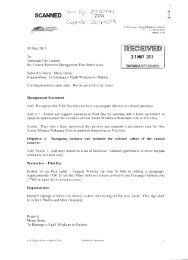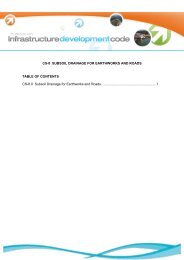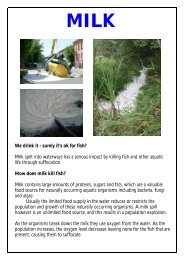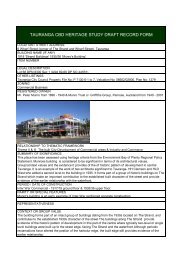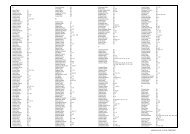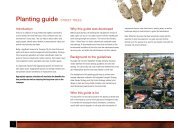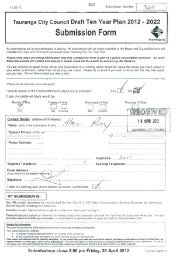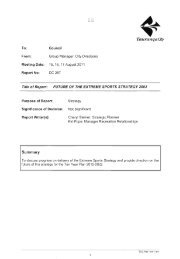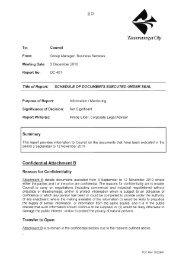Detailed Stormwater Management Practice Design - Tauranga City ...
Detailed Stormwater Management Practice Design - Tauranga City ...
Detailed Stormwater Management Practice Design - Tauranga City ...
You also want an ePaper? Increase the reach of your titles
YUMPU automatically turns print PDFs into web optimized ePapers that Google loves.
iii) Install a vertical minimum 1.5 metre long measuring rod marked in 10 mm<br />
increments in the centre of the pit bottom.<br />
iv) Use a rigid 150 mm pipe with a splash plate on the bottom to convey water<br />
to the bottom of the pit and reduce side-wall erosion or excessive<br />
disturbance of the ponded bottom.<br />
v) Add water to the pit at a rate that will maintain a water level of between 1 -<br />
1.25 metres above the bottom of the pit. A rotametre can be used to<br />
measure the flow rate into the pit.<br />
vi) Every 15-30 minutes, record the cumulative volume and instantaneous<br />
flow rate in litres per minute necessary to maintain the water level at the<br />
same point on the measuring rod.<br />
vii) Add water to the pit until one hour after the flow rate into the pit has<br />
stabilised (constant flow rate) while maintaining the same ponded level.<br />
viii) After one hour after the flow rate has stabilised, turn off the water and<br />
record the rate of infiltration in mm/hour from the measuring rod data, until<br />
the pit is empty.<br />
ix) Based on partial clogging, reduce the derived infiltration rate by a factor of<br />
0.5 and reduce this reduced rate in the design calculations.<br />
c) Site Data Analysis: Analysis should be undertaken as follows:<br />
i) Determine representative site infiltration rate from soil test results and the<br />
stratification identified during the site investigation.<br />
ii) Determine the textural class from the U.S. Department of Agriculture<br />
(USDA) textural triangle in SMG-9 Figure 21 Soil Textural Triangle. Sand<br />
is defined to have a diameter between 2000μ and 50μ while clay has a<br />
diameter of less than 2μ. Once the textural class has been determined, the<br />
infiltration rates can be found.<br />
iii) Determine infiltration rates by taking direct in-situ measurements of soil<br />
infiltration rates.<br />
iv) Long-term infiltration rates greater than one metre per hour (as per steps 8<br />
and 9 above) are considered too rapid to allow significant water quality<br />
treatment to occur and pretreatment will have to be provided.<br />
Page 43 Updated 01/11/2012



